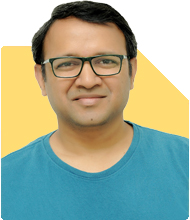MF SIPs Falling: Did I Choose the Right Funds?
Ramalingam Kalirajan |9854 Answers |Ask -Follow
Mutual Funds, Financial Planning Expert - Answered on Nov 02, 2024
He has an MBA in finance from the University of Madras and is a certified financial planner.
He is the director and chief financial planner at Holistic Investment, a Chennai-based firm that offers financial planning and wealth management advice.... more

I have started investing in MFs through SIPs just now from this month and have invested 9k in three different funds namely 1)bandhan nifty 50index fund 2k 2) sbi contra fund 5k and 3) sbi nifty next 50 index fund 2k , all these are constantly falling have I invested in right funds ??
1. Understanding the Nature of Index Funds in Your Portfolio
You've invested in two index funds: a large-cap and a mid-cap index fund. These funds replicate stock market indices and provide moderate growth at low costs. However, index funds come with certain limitations:
Lack of flexibility in performance: Index funds follow the market index strictly. They cannot adapt to changes in the economy or capture potential high-growth opportunities outside of the index.
Market-dependent returns: Index funds tend to mimic market performance. In bearish phases, their returns can remain low for extended periods.
Actively managed funds may outperform: Actively managed funds, guided by expert fund managers, can perform better during economic downturns and offer flexibility in stock selection.
Choosing a mix of active funds could add stability and potentially higher returns to your portfolio. This would allow you to manage risks better and capture returns that index funds may miss.
2. Advantages of Actively Managed Funds Over Index Funds
Your investments in index funds focus on replicating market returns. While index funds are simple and cost-effective, actively managed funds provide some distinct benefits:
Flexibility during market downturns: Active funds can adjust to changing market conditions, unlike index funds.
Higher growth potential: Fund managers actively select high-performing stocks, offering higher growth than standard indices.
Opportunities in mid and small caps: Actively managed mid-cap and small-cap funds can diversify your portfolio and aim for high-growth stocks not included in major indices.
Including actively managed funds could balance your portfolio, providing both growth and stability over time.
3. Role of Contra Funds in Diversifying Your Portfolio
Your portfolio includes a contra fund, which invests against market trends. Contra funds are unique but often misunderstood. Here’s what to consider:
Long-term potential: Contra funds might underperform during bullish phases but perform well during market corrections.
Riskier in the short term: These funds can experience sharp fluctuations. They need a longer horizon to show returns.
Balanced with active funds: Contra funds work well when paired with actively managed funds to add stability and increase growth chances.
If you prefer balanced returns, you might consider including funds that perform consistently across market cycles alongside your contra fund.
4. The Importance of Regular Funds with Certified Financial Planner Support
While you’ve invested in direct funds, it’s essential to consider the benefits of regular funds. Here’s why investing through a CFP adds value:
Tailored advice: A CFP offers tailored guidance, helping you select funds aligned with your risk tolerance and goals.
Proactive portfolio adjustments: Regular fund investments allow a CFP to actively monitor, rebalance, and adjust your portfolio based on market changes.
Enhanced portfolio growth: Advisory support enables you to explore options and strategies that could outperform simple index-based growth.
Investing in regular funds with CFP guidance ensures a hands-on approach, maximising your investments' potential and helping you achieve financial goals with ease.
5. Focus on Long-Term Potential Amid Market Volatility
As you mentioned, the market volatility might make your investments appear concerning. However, SIPs are designed to manage fluctuations and offer average cost benefits over time.
Ride out market lows: SIPs allow you to buy more units when markets are low, lowering your average purchase cost.
Compounding with time: Long-term investing enables the compounding effect, enhancing your overall returns.
Market cycles: The market operates in cycles. Investments that appear underperforming now may eventually provide robust returns as markets recover.
Patience and a long-term approach are essential in SIP investments, particularly during volatile phases. Staying invested is key to achieving the full growth potential.
6. Tax Considerations for Long-Term Gains
Being mindful of tax implications on your mutual fund investments is essential. The latest tax rules for capital gains include:
Equity mutual funds: Long-term gains above Rs 1.25 lakh attract a 12.5% tax, while short-term gains are taxed at 20%.
Debt funds: Both long-term and short-term gains are taxed based on your income slab.
Knowing these tax implications helps you plan better, as long-term investments benefit from favourable tax treatment.
7. Creating a Balanced and Diversified Portfolio
Balancing your portfolio ensures stable and consistent returns, especially when investing for the long term. Here’s a simple strategy:
Blend of equity and debt funds: Equity funds offer high growth, while debt funds add stability. Together, they balance risk and returns.
Mix of small, mid, and large caps: Each segment offers unique growth opportunities. Large caps provide stability, mid-caps offer growth, and small caps have high-growth potential.
Include hybrid funds: Hybrid funds offer a blend of equity and debt, providing both growth and safety, ideal for achieving long-term goals.
This diversified approach safeguards your investments from market volatility, ensuring you reach your financial goals.
8. Finally
Starting your SIP investments is a solid move, and with some fine-tuning, you can align it better with your goals. Consider introducing actively managed funds and possibly hybrid funds to balance the risks of index funds. By doing so, you open up more growth opportunities while safeguarding your portfolio against market downturns. Staying focused on your long-term strategy and reviewing your investments periodically with a CFP can help you make informed adjustments along the way.
Best Regards,
K. Ramalingam, MBA, CFP,
Chief Financial Planner,
www.holisticinvestment.in
https://www.youtube.com/@HolisticInvestment
You may like to see similar questions and answers below
Omkeshwar Singh | Answer |Ask -Follow
Head, Rank MF - Answered on Jun 09, 2021
Omkeshwar Singh | Answer |Ask -Follow
Head, Rank MF - Answered on Mar 17, 2020
Nikunj Saraf | Answer |Ask -Follow
Mutual Funds Expert - Answered on Oct 28, 2022
Ramalingam Kalirajan |9854 Answers |Ask -Follow
Mutual Funds, Financial Planning Expert - Answered on May 26, 2024
Ramalingam Kalirajan |9854 Answers |Ask -Follow
Mutual Funds, Financial Planning Expert - Answered on May 20, 2024
Patrick Dsouza |1336 Answers |Ask -Follow
CAT, XAT, CMAT, CET Expert - Answered on Jul 27, 2025
Patrick Dsouza |1336 Answers |Ask -Follow
CAT, XAT, CMAT, CET Expert - Answered on Jul 27, 2025
Nayagam P P |9494 Answers |Ask -Follow
Career Counsellor - Answered on Jul 27, 2025
Nayagam P P |9494 Answers |Ask -Follow
Career Counsellor - Answered on Jul 27, 2025
Nayagam P P |9494 Answers |Ask -Follow
Career Counsellor - Answered on Jul 27, 2025
Nayagam P P |9494 Answers |Ask -Follow
Career Counsellor - Answered on Jul 27, 2025
Nayagam P P |9494 Answers |Ask -Follow
Career Counsellor - Answered on Jul 27, 2025
Nayagam P P |9494 Answers |Ask -Follow
Career Counsellor - Answered on Jul 27, 2025
Nayagam P P |9494 Answers |Ask -Follow
Career Counsellor - Answered on Jul 27, 2025
Mohit Arora |71 Answers |Ask -Follow
Dating Coach - Answered on Jul 27, 2025






















